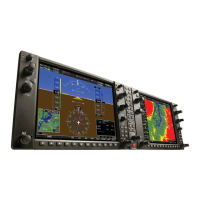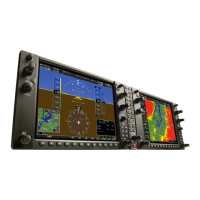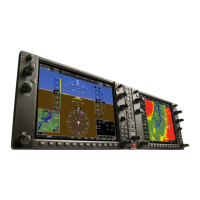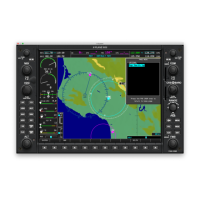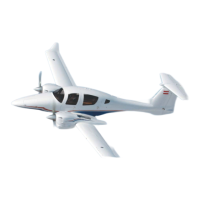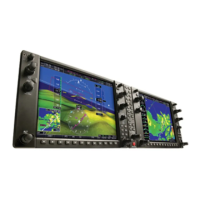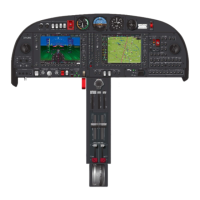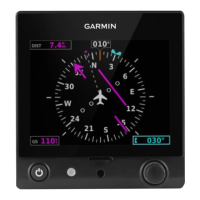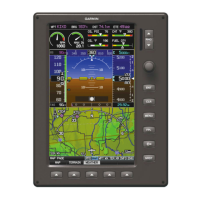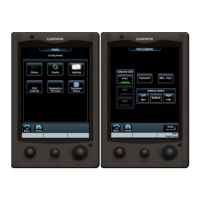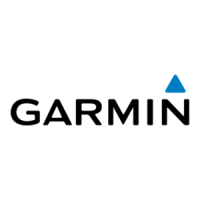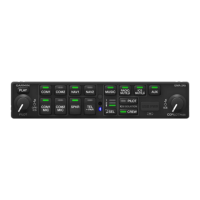Garmin G1000 Pilot’s Guide for the Diamond DA42NG
190-00962-04 Rev. A
SYSTEM
OVERVIEW
FLIGHT
INSTRUMENTS
EIS
AUDIO PANEL
& CNS
FLIGHT
MANAGEMENT
HAZARD
AVOIDANCE
AFCS
ADDITIONAL
FEATURES
APPENDICESINDEX
676
APPENDIX D
When OBS mode is active, the G1000 allows the pilot to set a desired course to/from a waypoint using the
CRS/BARO
Knob
and HSI (much like a VOR).
The most common application for using the OBS Softkey is the missed approach. The G1000 suspends
automatic waypoint sequencing (indicated by a ‘SUSP’ annunciation placed on the HSI) when the missed
approach point (MAP) is crossed. This prevents the G1000 from automatically sequencing to the missed
approach holding point (MAHP). During this time, the
OBS
Softkey designation changes to
SUSP
. Selecting
the
SUSP
Softkey reactivates automatic waypoint sequencing. The
OBS
Softkey then resumes its normal
functionality.
Why might the g1000 not automatically sequence to the neXt WayPoint?
The G1000 only sequences flight plan waypoints when automatic sequencing is enabled (i.e., no ‘OBS’ or
‘SUSP’ annunciation on the HSI). For automatic sequencing to occur, the aircraft must also cross the bisector of
the turn being navigated. The bisector is a line passing through the waypoint common to two flight plan legs
at an equal angle from each leg.
hoW can a WayPoint Be skiPPeD in an aPPRoach, a DePaRtuRe, oR an aRRival?
The G1000 allows the pilot to manually select any approach, departure, or arrival leg as the active leg of
the flight plan. This procedure is performed on the MFD from the Active Flight Plan Page by highlighting the
desired waypoint and selecting the ACT LEG Softkey then the ENT Key to approve the selection. The GPS
then provides navigation along the selected flight plan leg.
When Does tuRn anticiPation Begin?
The G1000 smooths adjacent leg transitions based on a normal 15° bank angle (with the ability to roll up to
30°) and provides three pilot cues for turn anticipation:
• A waypoint alert (‘Next DTK ###° in # seconds’ or ‘Next HDG ###° in # seconds’) appears on the PFD 10
seconds before the turn point and flashes as it counts down to zero.
• A flashing turn advisory (‘Turn [right/left] to ###° in # seconds’) appears on the PFD 10 seconds before the
turn and flashes as it counts down to zero. ‘Turn [right/left] to ###° now’ or ‘Next [DTK/HDG] to ###° now’
is displayed when the pilot is to begin the turn and the HSI (GPS mode) automatically sequences to the next
DTK or HDG value.
• The To/From indicator on the HSI flips momentarily to indicate that the midpoint of the turn has been
crossed.
When Does the cDi scale change?
Once a departure is activated, the G1000 Course Deviation Indicator (CDI) full scale deflection is set to 0.3
nm. The CDI scale changes to 1.0 nm (terminal mode) then ramps up to 2.0 nm (enroute mode) at 30 nm
from the departure airport. When 31 nm from the destination, the CDI scale smoothly transition from 2.0 nm
back to 1.0 nm (terminal mode). At 2.0 nm before the FAF during an active approach, the CDI scale transitions
down further based on the type of approach activated (LNAV, LNAV/VNAV, LPV). When a missed approach is
activated, the CDI is set to 0.3 nm. See the Flight Instruments Section for more details on CDI scaling.
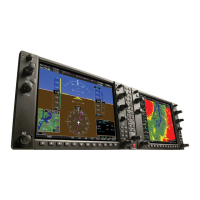
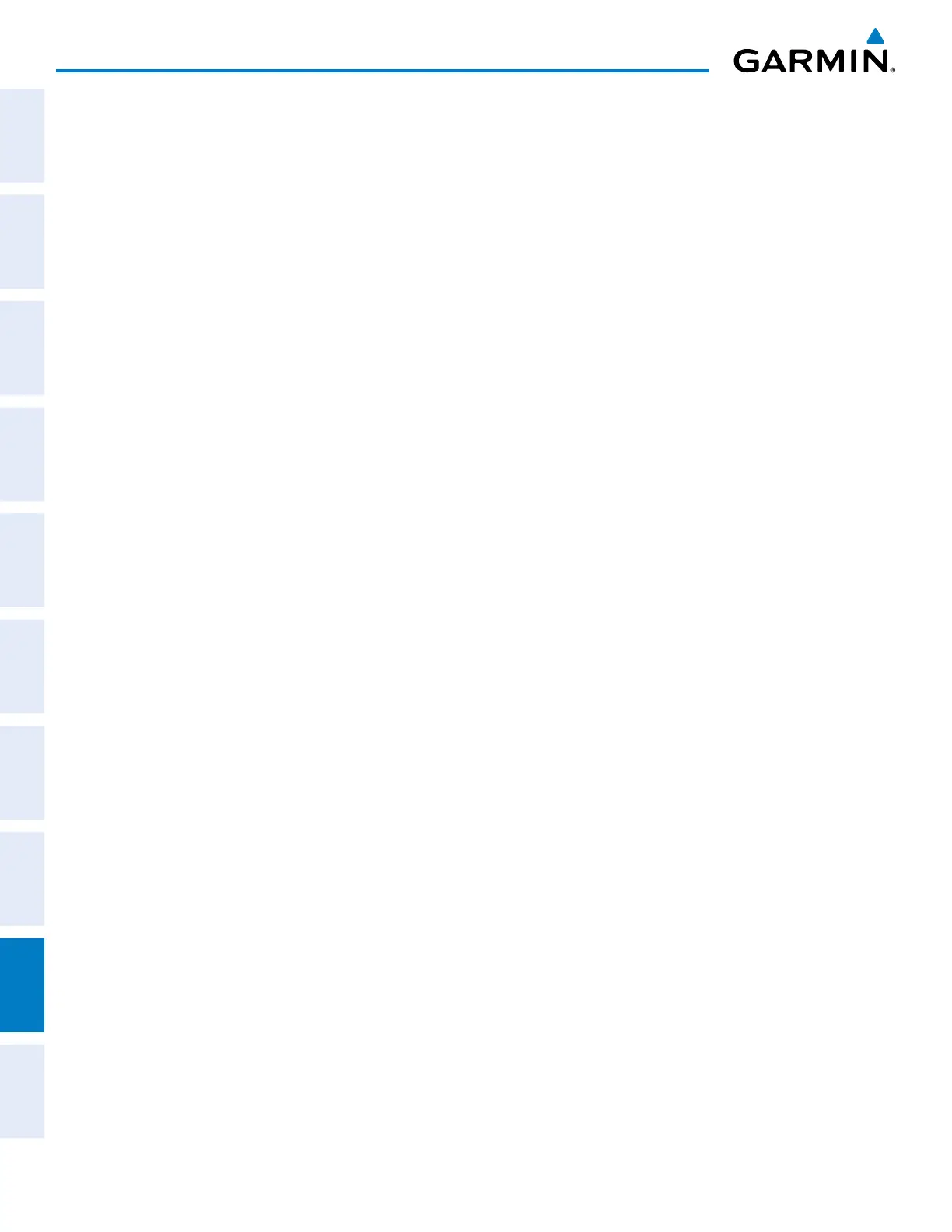